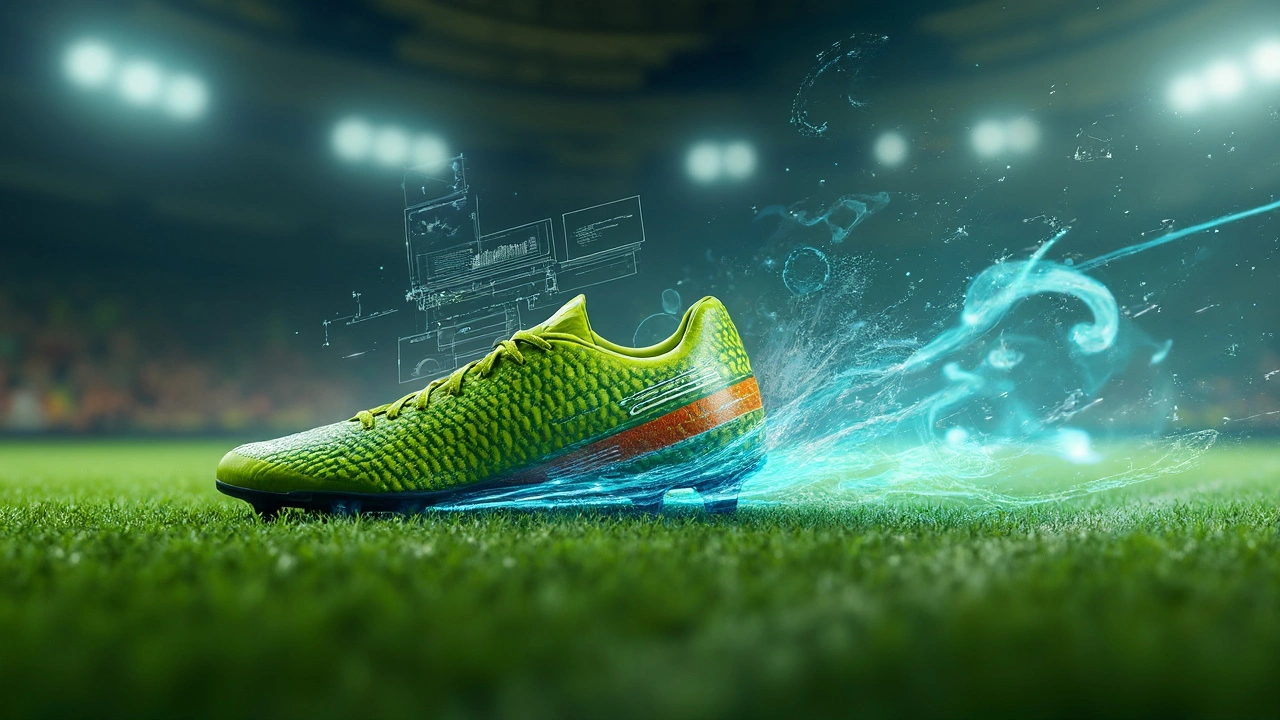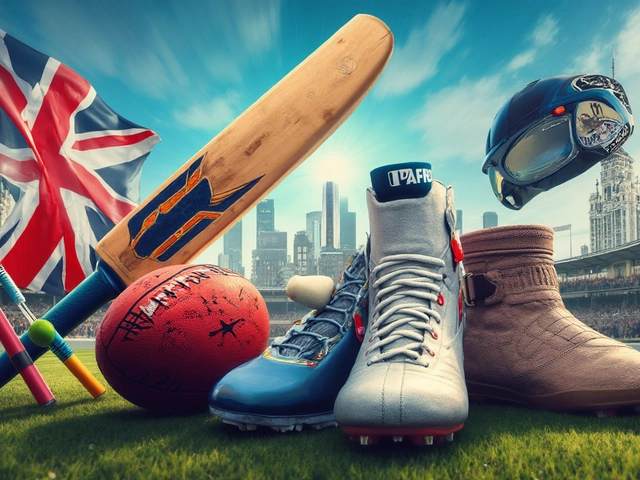When you think of sports equipment, do you picture the latest soccer ball or perhaps the high-tech gear that athletes sport during competitions? What if I told you it's all about physics? The equipment we use isn't just cool; it's a testament to the power of physical science.
Take, for instance, a simple tennis racket. Its frame and strings are designed to play a huge role in how the ball reacts when hit. This isn't random; it's physics at work. The materials used, like graphite or carbon fiber, are chosen for their strength and weight – optimizing the balance between power and control.
But it doesn't stop there. Each piece of sports equipment undergoes rigorous testing and redesign to fit an athlete's needs while staying on the cutting edge of technological advances. From the lightest running shoes to aerodynamic cycling helmets, every detail matters, and understanding these can give you an edge, whether you're a seasoned pro or an enthusiastic amateur.
- The Role of Physics in Sports Equipment
- Materials That Make a Difference
- Innovation and Technology in Sports Gear
- Tips for Choosing the Right Equipment
The Role of Physics in Sports Equipment
Let's take a closer look at how physics really impacts sports equipment. Whether it's in soccer, football, tennis, or swimming, physics plays a crucial role in the design and function of the gear we love.
Consider basketballs. Ever noticed how they bounce so predictably? That's all thanks to principles like elasticity and air pressure. The outer layer of a basketball is designed to enhance grip and durability while its inner tube traps air, maintaining perfect pressure to ensure an optimal bounce. A slight tweak in air pressure can drastically affect the game.
Then there's something like a golf club. The angle of the clubface, the length of the shaft, and even the weight distribution are all meticulously crafted using physics to ensure maximum power and accuracy. When you swing a golf club, forces like torque and centripetal force work together to launch the ball down the fairway.
But you know what's even cooler? How about the impact of drag in sports like cycling and swimming? Athletes wear streamlined suits made from materials that minimize air and water resistance, helping them go faster. In fact, the right aerodynamic position can cut drag by up to 20%, which is often the difference between gold and silver.
A good way to illustrate these points is by examining the evolution of the running shoe. Engineers constantly explore new synthetics for their lightweight and cushioning abilities. The shoe’s design aims to maximize energy return with every step while providing support and comfort.
Sports technology keeps evolving as we find new ways to apply physical science. So the next time you're on the field or watching your favorite sport, just remember: it's physics that makes the game not just a game, but a finely-tuned performance of science and skill.
Materials That Make a Difference
Ever wonder why certain sports equipment feels just right while others seem off? It's all about the materials! The right materials make the difference between a good sports experience and a great one. Take baseball bats, for instance. Aluminum bats are super popular because they're lightweight and provide excellent balance, allowing players to swing faster. Wood bats, on the other hand, are known for their traditional feel but are heavier.
Let's not forget about tennis rackets. These guys have evolved over the years and are now made from materials like graphite or carbon fiber. Why? Because these materials are not only strong but also incredibly light, helping players control shots with more precision and power.
In the world of cycling, sports technology has led to carbon fiber dominating the scene. It's loved for its high strength-to-weight ratio, making it perfect for racing bikes. Riders enjoy the stiffness without the extra weight, helping them cut through the air like a knife.
Check out running shoes. Innovations in foam and rubber compounds in the soles help absorb impact while providing better energy return, making each step more efficient. Companies are even experimenting with 3D printing to tailor shoes to individual athletes' needs.
Some quick facts to blow your mind: Did you know that golf balls are usually made from synthetic rubber and layers of urethane? This blending of materials helps with durability and distance control. And speaking of durability, here's a fun stat:
| Material | Estimated Lifespan |
|---|---|
| Aluminum Bat | 2-5 Years |
| Carbon Fiber Bike Frame | 5-7 Years |
| Tennis Racket | 1-2 Years |
Sports equipment might look simple, but look closer, and you'll see the thought behind every choice. These materials don't just enhance performance; they redefine it. Who would've thought that a bit of material science could revolutionize the way we play?

Innovation and Technology in Sports Gear
Ever wondered how sports equipment keeps getting better and better? It's all thanks to innovation and technology, making each product more efficient, safer, and optimized for performance. Let's break down some key advancements reshaping our favorite sports.
Firstly, let's talk about smart gear. Imagine wearing a t-shirt that monitors your heart rate, or shoes that analyze your running form. With integrated sensors and valuable feedback, athletes can fine-tune their training and performance. It’s all about using data to gain a competitive edge.
Another area of interest is the use of new materials. Carbon nanofibers and graphene are making waves in the industry. These new-age materials are incredibly strong yet light, ensuring equipment not only offers durability but also enhances athletic abilities.
Advanced manufacturing techniques like 3D printing have also made a significant mark. This technology allows for the creation of customized gear tailored to an individual’s specific needs, whether it’s a lightweight bicycle frame or a perfectly balanced bat.
For those interested in statistics, here's a quick look at some figures that highlight recent trends:
| Year | Innovation | Impact (Speed/Performance Increase) |
|---|---|---|
| 2022 | Smart Soccer Ball | 15% better accuracy |
| 2023 | Carbon Fiber Tennis Rackets | 20% more power |
| 2024 | 3D Printed Running Shoes | 25% faster sprint times |
These advances are just the tip of the iceberg. As technology continues to evolve, we can expect even more groundbreaking innovations that will change the game for athletes and enthusiasts alike. So, whether you're picking up new gear or just curious, remember that physics and technology come together to keep you performing at your best.
Tips for Choosing the Right Equipment
Choosing the right sports equipment can feel overwhelming with so many options out there. It's about finding the best fit for your specific needs, and here's how you can do just that.
First up, know your sport inside out. Whether it's tennis, basketball, or golf, every sport has specialized gear designed to enhance performance. For instance, the weight and flexibility of a golf club can significantly influence your swing. So, it's essential to understand the particular demands of your game.
Next, consider the materials. High-quality materials can enhance durability and performance. For example, carbon fiber is favored in many sports technology applications for its lightweight and robust properties.
Don't rush the decision. Try before you buy, if you can. Tests are vital – bring equipment to the field, court, or gym to see how it feels. Your comfort and confidence while using the gear matter.
- Seek Expert Advice: Don’t hesitate to ask for help from professionals or at specialty stores. They can offer valuable insights into the latest trends and technology in sports equipment.
- Budget Wisely: While it's tempting to go for the cheapest or, conversely, the priciest option, balance is key. Assess how often you'll use the gear, and invest accordingly. Sometimes, mid-range options offer the best combination of quality and price.
- Consider Maintenance: Some equipment requires more upkeep than others. Ready to wax that surfboard regularly? If not, maybe it’s better to opt for lower maintenance gear.
A smart choice doesn't just lean on your immediate comfort; it saves you money in the long run and keeps you injury-free. Remember, the right equipment serves as your partner in your athletic journey, so choose wisely and enjoy the game!








